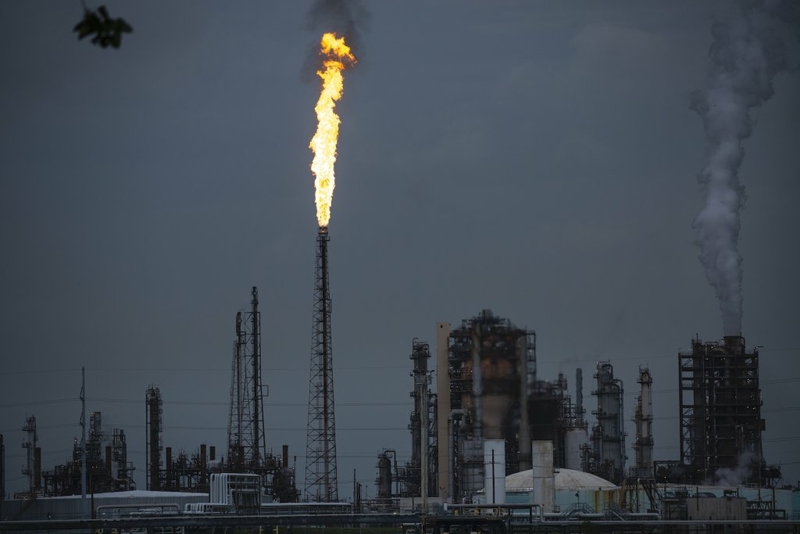A petroleum refinery in Louisiana. Last week, a federal appeals court ruled that Wisconsin doesn’t need to comply with stricter air quality rules to decrease smog in three southeastern Wisconsin counties. (Photo by Drew Angerer/Getty Images)
A federal appeals court has ruled that the state of Wisconsin and businesses operating in certain parts of southeastern Wisconsin will not be required to meet more stringent air quality standards for ozone pollution — giving state regulators and industry a reprieve from what they say were “costly and burdensome requirements.”
On Friday, the Seventh Circuit Court of Appeals sided with the state’s request to temporarily postpone a rule issued by the Environmental Protection Agency. Late last year, the EPA reclassified areas of Milwaukee, Kenosha and Sheboygan counties as being in “serious nonattainment” of the agency’s 2015 ozone standards. In February, the state filed a lawsuit for the review of the EPA finding.
The enforcement of the EPA standard would have forced the state to revise its plan for complying with national air quality standards under the Clean Air Act, and hundreds of businesses would have had to assess if their existing permits need to be renewed or revised. The state complained that these measures would have cost the Department of Natural Resources and the state’s businesses millions of dollars when most of the ozone pollution over the areas is caused elsewhere and settles over southeast Wisconsin after drifting across Lake Michigan.
Environmental groups have said that even if Wisconsin’s industries aren’t creating most of the ozone pollution, the businesses have a duty to work to protect the health and well-being of the state’s residents. In 2018, Clean Wisconsin sued the EPA to force the agency to declare the three southeastern Wisconsin counties aren’t complying with federal air quality rules.
Ozone pollution, also known as smog, occurs most often in the summer when air pollution from vehicle exhaust and industrial processes reacts with sunlight. The pollution can be harmful to people’s respiratory systems.
“The fact that southeastern Wisconsin has been reclassified as in serious nonattainment for ozone means that residents of those counties are at higher risk of respiratory and cardiovascular diseases, and Wisconsin should be implementing all possible policies and strategies to reduce ozone pollution to protect public health,” Clean Wisconsin attorney Katie Nekola said in a statement to Wisconsin Public Radio.
But business groups and the state have argued the costs are too high for a problem that doesn’t start in Wisconsin. DNR analysis has found that less than 10% of the ozone pollution in the state is caused by Wisconsin industry.
The state Department of Justice said in its lawsuit that the “change triggers costly permit requirements, complex regulations, and stringent emissions offset mandates,” which could create $4 million in added costs for the state and cost an estimated 382 businesses between $1 million and $6.9 million.
Scott Manley, a lobbyist for Wisconsin Manufacturers and Commerce, said the court’s Friday order grants relief from the “crushing and job-killing ozone regulations.”
“Data from both the DNR and EPA indicate that the vast majority of ozone pollution in eastern Wisconsin is caused by emissions originating from outside our state borders,” Manley said in a statement. “It’s unfair to punish Wisconsin businesses for pollution they didn’t create, and [the] order is the first step toward righting this wrong.”
SUBSCRIBE: GET THE MORNING HEADLINES DELIVERED TO YOUR INBOX









